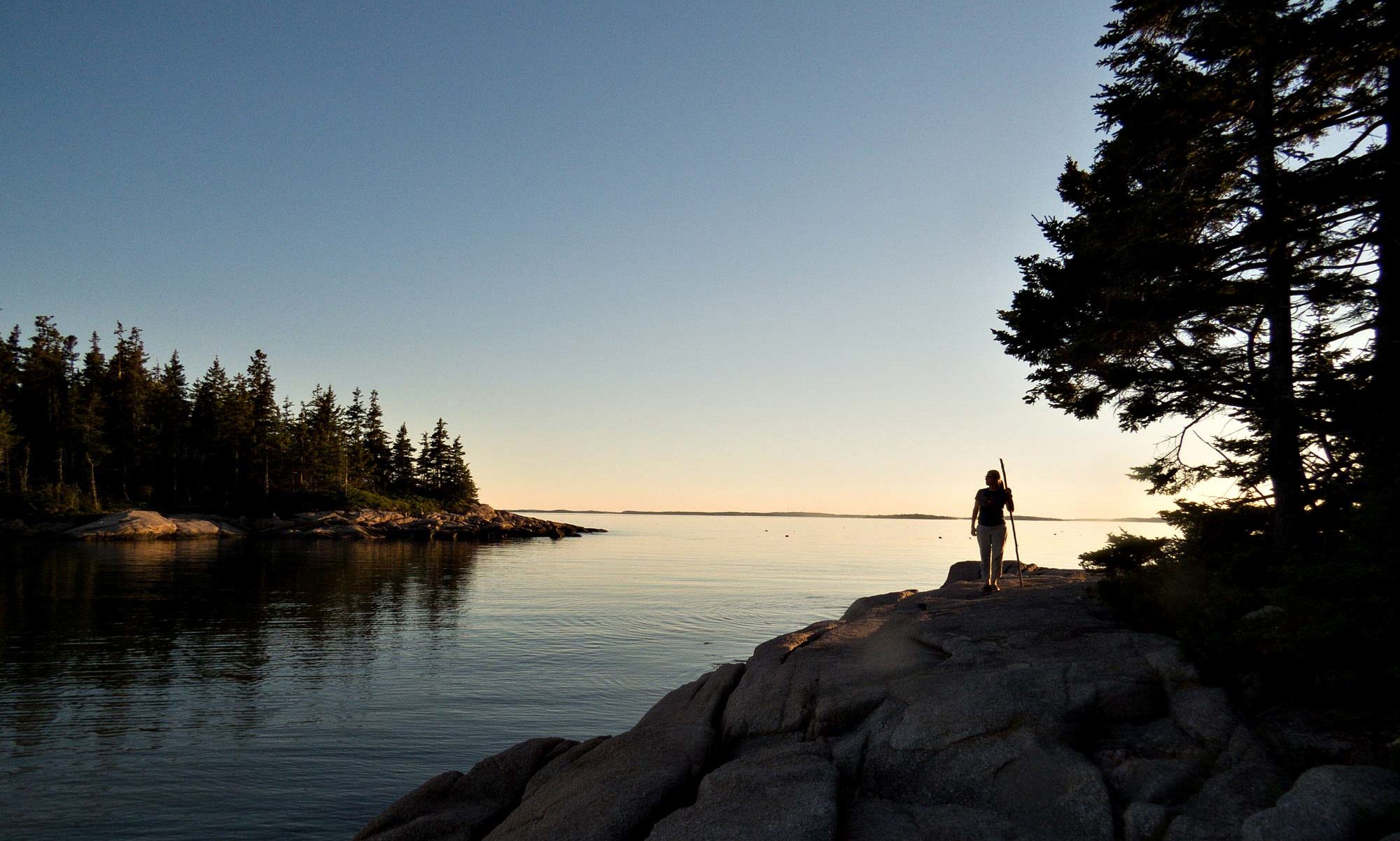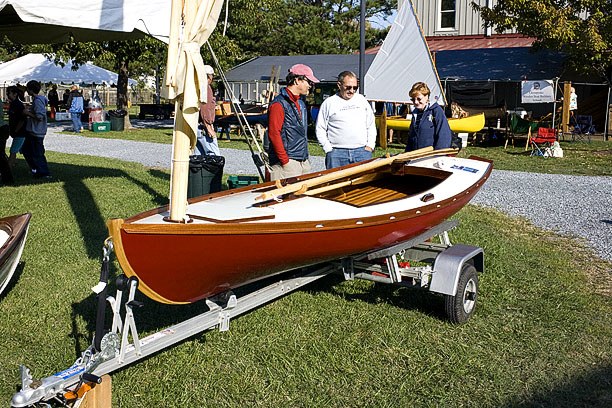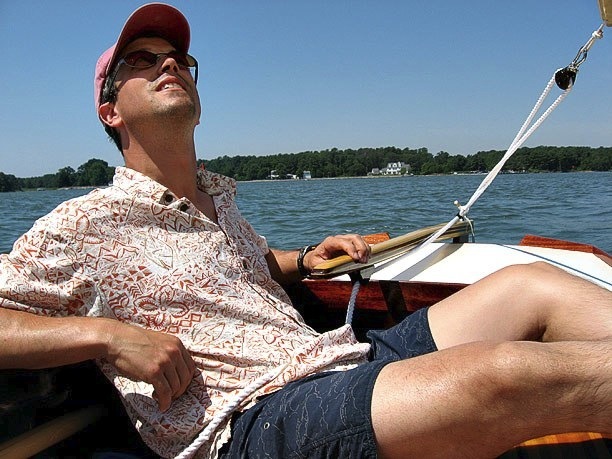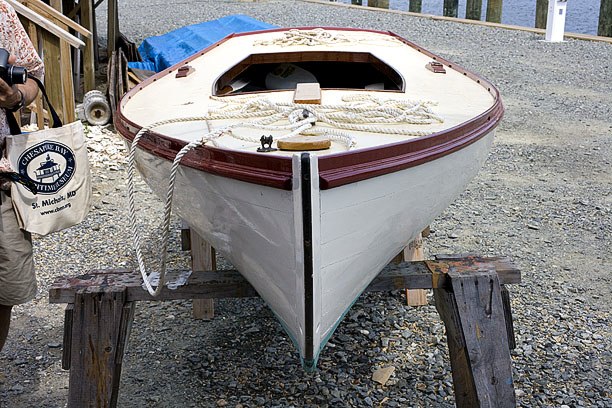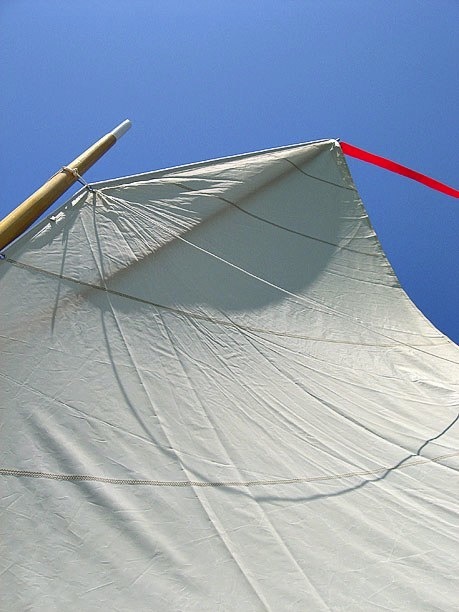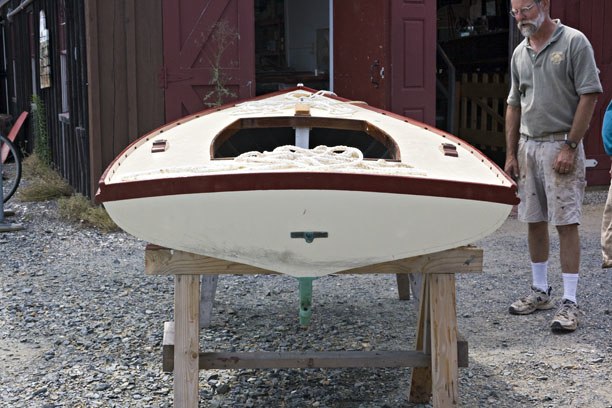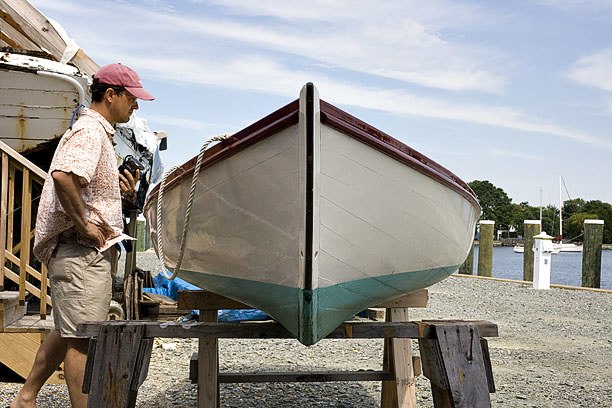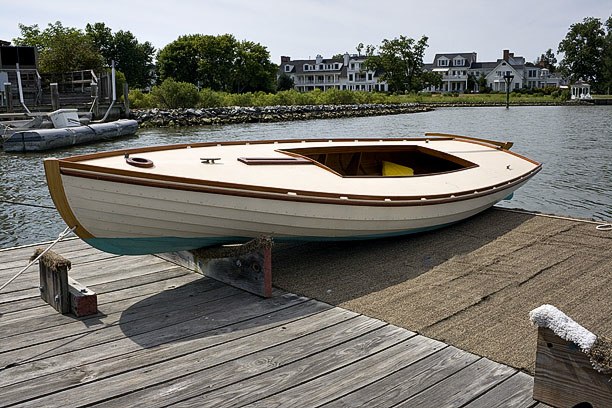Richard Scofield , Boatyard Manager, and
Peter Thatcher, with the Second Oldest Melonseed
The next phase of construction starts a series of tasks for which there is very little instruction. There’s a lot of latitude in how you go about these things, and every builder seems to approach them in slightly different ways. Like it says on the old explorer maps of The Known World, beyond here there be dragons. It’s a good time to see what other people have done and plan ahead, so I took a day off from work to do a bit of research in St. Michaels, Maryland.
Tony Thatcher was back east from Montana this week, visiting family in St. Michaels. He built a beautiful Melonseed for his parents a year ago, and we met at the Small Craft Festival last October where the boat made its debut. His folks, Peter and Shirley, were kind enough to let me invade for the day to have another look at Tony’s handiwork, and to steal him away for several hours of close consultation, otherwise known as sailling.
It’s really discouraging looking at Tony’s work. He did such a great job all the way around. Like every builder, I’m sure he knows where some goof ups and blemishes are, but you sure can’t see them.
His attention to detail is impressive, and the great care he took is evident everywhere. He keeps a gallery of his build process online here.
We had a perfect day for sailing. Winds were mostly steady around 10 mph, wandering some between 5 and 15, and the boat held a steady 4 to 6 mph without any effort on our part. We wandered deep into some shallow creeks, circling duck blinds, and shot straight out across open water to the far shore, dodging occasional whitecaps, all with equal ease.
Tony chose the 72 sq/ft sail that Barto specs in his plans, which is 10 sq/ft larger than the more common Crawford rigs, but he used the simpler double sprit set up of the Crawford boats rather than the sprit and boom in Barto’s plans. I have been thinking of doing the same. One of the things I wanted to find out is how well the larger sail handles. The answer is well indeed. In gusts to 15 mph we never even got the rail wet, which surprised me, but there’s enough sail up high to wring a bit more out of a breeze when it starts to fade. I imagine as the wind builds towards 20 you’d have to think about reefing. Sprit sails often don’t behave well reefed, but Peter and Shirley sailed over to Assateague Island in a real blow with the reefs in, and say it handled smoothly. More food for thought.
As if sailing in a gorgeous boat on a beautiful day isn’t enough, there’s more. After lunch, we headed over to the museum.
The Chesapeake Bay Maritime Museum in St. Michaels currently has several Melonseeds on the grounds. One is the second oldest Melonseed known to exist, from the early 1920’s, which they’ve restored and use as a pattern for building reproductions in the Apprentice Shop.
Also, Marc Barto, the same Barto who drew one of the sets of plans I have, is on the museum staff. A boat he built years ago has been donated to auction as a fundraiser for the museum. Turns out that one is in storage offsite, but the chance to see one of the granddaddies of this boat design was a real treat.
Seeing one of these older boats up close, you get a real feel for it’s original purpose. Aside from a little varnish on the cockpit trim, everything is designed for easy maintenance. It would be completely at home in the winter marsh, drug over oyster bars and onto a beach. It’s the kind of boat you’d climb into with a muddy, wet dog, a shotgun, and a brace of Teals and Canvasbacks to take home for dinner.
The reproductions are nice, too, closely following original construction methods, and only a bit more varnish. This one is for sale for $10,000.
All around, a great way to spend a day not working.
melonseed skiff, mellonseed skiff, melon seed, mellon seed
